
The Sagrada Familia, a breathtaking basilica in Barcelona designed by the visionary architect Antoni Gaudí, is a stunning example of modernist architecture. Its intricate facades and towering spires tell a story of faith, creativity, and dedication that has captivated visitors for over a century.
In this article, we explore The Fascinating Facts about Sagrada Familia: Unveiling Gaudí's Masterpiece, highlighting its unique design elements, construction challenges, and the deep symbolism embedded in its architecture. Join us as we delve into the remarkable journey of this iconic landmark that remains unfinished yet continues to inspire millions around the world.
Unraveling the Architectural Genius of Antoni Gaudí in Sagrada Familia
Antoni Gaudí's architectural genius is profoundly showcased in the design of the Sagrada Familia. His innovative approach combines natural forms with intricate geometrical patterns, creating a harmonious integration of structure and nature. This unique vision is evident in details such as the organic shapes of the columns, which resemble trees, providing both stability and an illusion of growth. Gaudí believed that architecture should reflect the beauty of the natural world, a philosophy that is vividly illustrated throughout the basilica.
One of the most striking features of the Sagrada Familia is its triple nave layout, which diverges from traditional Gothic designs. This reflects Gaudí's desire to create a space that not only serves as a place of worship but also as a sanctuary of light and color. The use of stained glass, particularly in the eastern facade, casts a mesmerizing array of colors into the interior, enhancing the spiritual experience of visitors. Key aspects of this layout include:
- Central Nave: The highest section, drawing the eye upwards towards the heavens.
- Side Naves: Broader areas that offer a sense of community and inclusivity.
- Apse: A semi-circular area that serves as a focal point for the altar.
Moreover, Gaudí's attention to detail extends to the basilica's facades, each telling a different story. The Nativity Facade celebrates the birth of Christ with intricate carvings depicting scenes from the Bible. In contrast, the Passion Facade conveys a sense of solemnity and sacrifice, using sharp lines and stark forms. This duality not only showcases Gaudí's versatility but also reflects his deep understanding of symbolism in architecture, making each visit to the Sagrada Familia a profound journey through faith and artistry.
To appreciate the full scope of Gaudí’s vision, one must consider the ongoing nature of the construction process. With completion projected for 2026, the Sagrada Familia stands as a testament to perseverance and innovation in architecture. The continuous efforts to maintain Gaudí's original designs while incorporating modern techniques exemplify the delicate balance between tradition and progress. This enduring project draws architects and enthusiasts alike, eager to witness the unfolding of Gaudí's masterpiece.
The Symbolism of Sagrada Familia: Understanding Gaudí's Vision
The symbolism embedded in the Sagrada Familia reflects Antoni Gaudí's profound understanding of faith and nature. Each architectural element serves a purpose beyond aesthetics, embodying spiritual meanings that resonate with visitors. For Gaudí, architecture was not merely a form of construction; it was a way to express the divine through material. This vision is encapsulated in several key themes:
- The Trinity: The three facades represent the birth, passion, and glory of Christ, symbolizing the Holy Trinity.
- Nature: Organic forms throughout the structure mimic natural elements, representing the connection between the divine and the earth.
- Light: The strategic use of light and color signifies spiritual enlightenment, guiding visitors on their journey of faith.
One of the most compelling aspects of Sagrada Familia is the way it illustrates the harmony between man and nature. Gaudí believed that nature was a reflection of God's creation, and he sought to incorporate this belief into his work. The basilica's columns, resembling tree trunks, not only provide structural support but also symbolize growth and life, inviting visitors to experience a sense of wonder and reverence.
Moreover, the intricate details found in the sculptures and carvings serve as visual narratives of Christian stories and values. The Nativity Facade, with its joyful depiction of Christ's birth, contrasts sharply with the austerity of the Passion Facade, which emphasizes sacrifice and redemption. This duality captures the essence of the human experience, reminding visitors of the beauty and pain inherent in faith.
Ultimately, Gaudí's vision for the Sagrada Familia transcends a mere architectural marvel; it invites visitors to embark on a spiritual journey. As the basilica continues its construction, it stands as a living symbol of dedication and faith, encouraging all who enter to reflect on their own beliefs and connections to the divine. Through its ongoing evolution, the Sagrada Familia remains a testament to Gaudí's genius and the enduring power of symbolism in architecture.
Exploring the Unique Design Elements of Sagrada Familia
The Sagrada Familia's unique design elements are a testament to Antoni Gaudí's creativity and his ability to blend architectural innovation with spirituality. One of the most remarkable aspects is the use of hyperboloid structures, which create a sense of flowing movement and allow for greater stability in the towering columns. This design not only enhances the aesthetic appeal but also serves a functional purpose, making the basilica resilient against external forces such as wind and earthquakes.
Gaudí incorporated a variety of geometrical shapes into the Sagrada Familia, reflecting his fascination with nature and mathematics. The spiral shapes and parabolic arches can be observed throughout the structure, contributing to its organic feel. Key geometric elements include:
- Parabolic Arches: These arches provide strength and distribute weight efficiently, creating a visually striking effect.
- Hyperboloid Structures: Used for the columns and facades, they enhance the dynamic appearance of the basilica.
- Fibonacci Sequence: This mathematical pattern appears in the layout, promoting harmony and balance.
Furthermore, the integration of natural light is a crucial design element of the Sagrada Familia. The large stained-glass windows not only illuminate the interior but also contribute to the spiritual ambiance by casting colorful patterns on the walls. Gaudí's strategic placement of windows is designed to reflect the changing light throughout the day, symbolizing the passage of time and the divine presence within the space. This connection to light is vital in enhancing the experience of visitors as they navigate through the basilica.
Lastly, the Sagrada Familia's facades, rich with sculptural details, serve as visual storytelling elements. Each facade was meticulously designed to convey different aspects of Christ's life, inviting contemplation and reflection. The use of various textures and materials adds depth, while the symbolic representation of biblical stories enriches the visitor's experience. Overall, these unique design elements encapsulate Gaudí's visionary approach and his profound understanding of architecture as a means of spiritual expression.
The History Behind Sagrada Familia: A Journey Through Time
The history of the Sagrada Familia is a testament to vision, creativity, and perseverance. Construction began in 1882, spearheaded by architect Francisco de Paula del Villar, but it was Antoni Gaudí who took over the project in 1883. His unique approach transformed the initial Gothic design into a groundbreaking modernist masterpiece, imbuing it with his deep spiritual beliefs and love for nature. Over the decades, the basilica has evolved, mirroring the changes in architectural styles and technologies.
Notably, the Sagrada Familia was consecrated by Pope Benedict XVI in 2010, marking a significant milestone in its long history. Despite being under construction for over a century, it has become a symbol of Barcelona and a major pilgrimage site. The ongoing project, with a projected completion date of 2026, coincides with the centenary of Gaudí's death, further solidifying its legacy as a cultural and religious icon.
The construction of the Sagrada Familia has faced numerous challenges, including financial difficulties, civil wars, and the impact of World War II. Each set of circumstances brought unique obstacles, yet the commitment to Gaudí's vision has endured. Today, skilled artisans and modern technology work hand-in-hand to continue the intricate craftsmanship that defines this architectural wonder, emphasizing the importance of preserving traditional techniques while embracing innovation.
As visitors explore the Sagrada Familia, they are not just witnessing a building; they are experiencing a living history. The structure captures the essence of Gaudí's philosophy, which sees architecture as an expression of the divine. Each stone laid, and every detail crafted contributes to an ongoing narrative that invites reflection on faith and creativity, making the Sagrada Familia a profound journey through time.
Sagrada Familia: A Testament to Modernist Architecture in Barcelona
The Sagrada Familia stands as a monumental testament to modernist architecture in Barcelona, showcasing Antoni Gaudí's revolutionary approach to design. This iconic basilica harmoniously combines spiritual symbolism with innovative structural techniques, marking a significant departure from traditional architectural norms. Gaudí's vision transformed the Sagrada Familia into a living representation of artistic expression and religious devotion, encapsulating the essence of modernism in its form and function.
At the heart of Gaudí's modernist ideology is the profound integration of natural elements into the architectural fabric of the Sagrada Familia. He drew inspiration from organic forms, which are vividly reflected in the basilica's flowing lines and intricate designs. This connection to nature is not just aesthetic; it embodies a deeper spiritual narrative, allowing visitors to engage with the structure on a more profound level. Key features illustrating this philosophy include:
- Organic Columns: Mimicking tree trunks, these columns create a sense of being in a forest, blending nature with spirituality.
- Curvilinear Shapes: The use of sinuous forms enhances the visual dynamism of the building, symbolizing movement and life.
- Eclectic Materials: Gaudí utilized a variety of stones, ceramics, and metals, reflecting the diversity found in nature.
Furthermore, the Sagrada Familia's facades serve as a testament to Gaudí's mastery of storytelling through architecture. Each facade is meticulously crafted to convey distinct themes and narratives, contributing to the overall message of the basilica. The contrast between the Nativity Facade and the Passion Facade highlights the duality of human experience, merging joy and sorrow in a visual dialogue that invites introspection and spiritual awakening.
As construction continues towards its anticipated completion date in 2026, the Sagrada Familia not only reflects Gaudí's genius but also symbolizes the ongoing evolution of modernist architecture. This blend of past and future illustrates both the challenges and triumphs faced in bringing Gaudí's vision to life. Ultimately, the Sagrada Familia stands as a beacon of creativity and faith, a powerful reminder of how architecture can transcend mere functionality to become a profound expression of cultural and spiritual identity.
What Makes Sagrada Familia a UNESCO World Heritage Site?
The Sagrada Familia was designated a UNESCO World Heritage Site in 2005, a recognition that highlights its exceptional architectural and historical significance. This designation emphasizes the basilica's status not only as a spiritual center but also as a landmark of modernist architecture that reflects the innovative genius of Antoni Gaudí. UNESCO's criteria for this recognition include its outstanding universal value, integrity, and authenticity, which are embodied in the basilica’s unique design and craftsmanship.
One of the main factors contributing to this prestigious status is the Sagrada Familia's distinctive blend of naturalistic forms and complex geometrical structures. Gaudí's visionary use of hyperboloid and parabolic shapes creates a dynamic interplay of light and space, which enhances the spiritual experience for visitors. The incorporation of natural elements, such as tree-like columns and intricate sculpture work, reinforces the connection between architecture and nature, encapsulating the essence of Gaudí's philosophy.
Moreover, the cultural significance of the Sagrada Familia extends beyond its architectural features. The basilica serves as a living testament to the social and religious aspirations of the people of Barcelona. Its ongoing construction reflects a commitment to both preserving Gaudí's original vision and embracing modern techniques. This dedication ensures that the Sagrada Familia remains a vital part of the cultural landscape, engaging new generations and fostering a deeper appreciation for the arts and spirituality.
In addition to its architectural brilliance, the Sagrada Familia's storytelling is a crucial aspect of its UNESCO heritage status. Each of its facades narrates different biblical tales, inviting contemplation and reflection. The harmonious blend of artistry and spirituality found within its walls makes the Sagrada Familia not just a monument but also a profound journey through faith, art, and history, solidifying its place in the hearts of millions around the world.
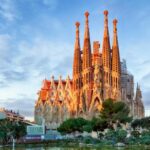 The Fascinating Facts About La Sagrada Familia: Barcelona's Architectural Masterpiece
The Fascinating Facts About La Sagrada Familia: Barcelona's Architectural Masterpiece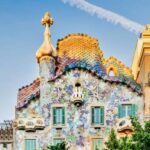 Popular ticket options for Casa Batlló in Barcelona, Spain
Popular ticket options for Casa Batlló in Barcelona, SpainIf you want to know other articles similar to The Fascinating Facts about Sagrada Familia: Unveiling Gaudí's Masterpiece you can visit the category WHERE YOU CAN GO.
Leave a Reply


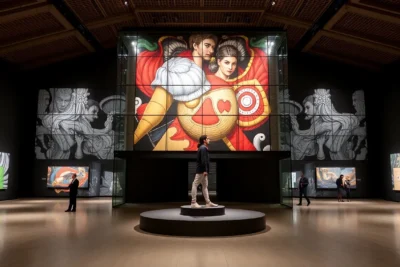
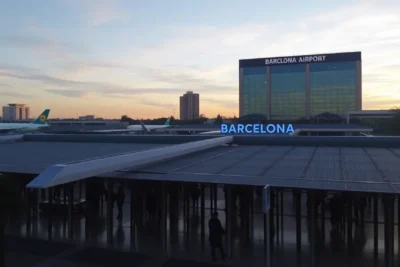
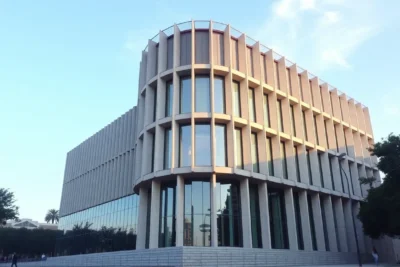
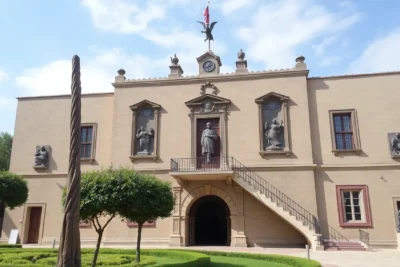
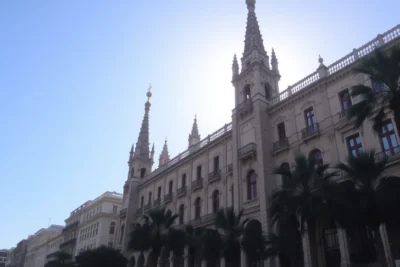
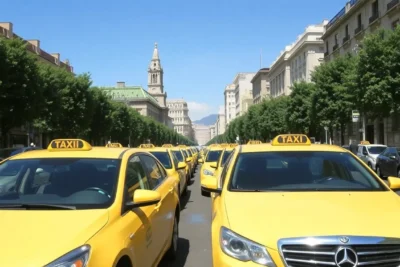
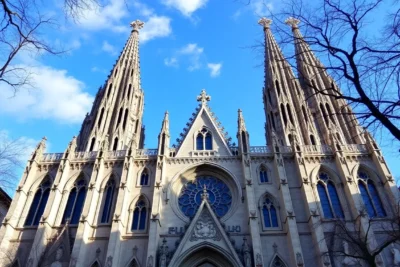
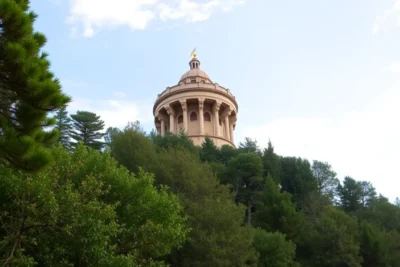
Read more!